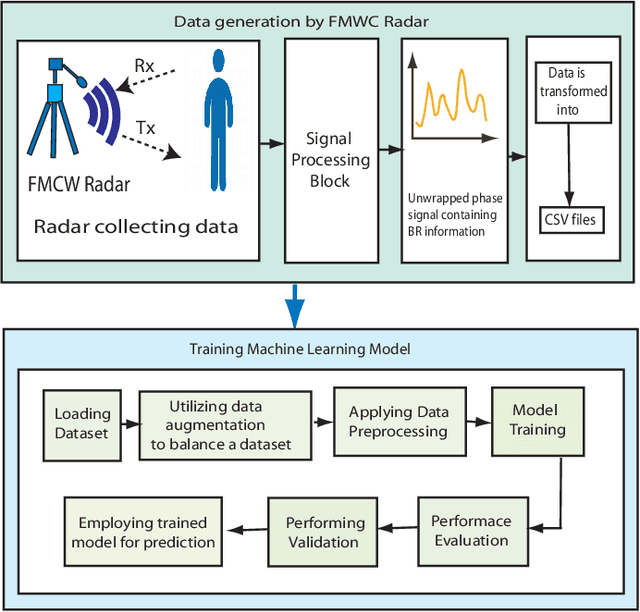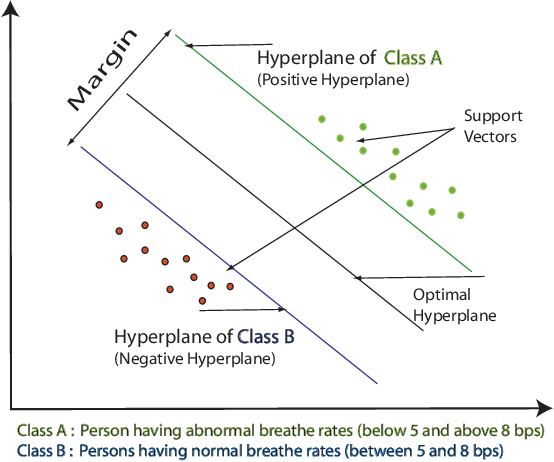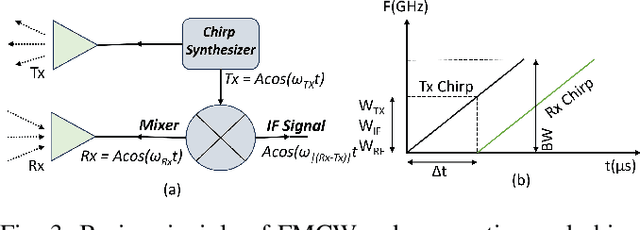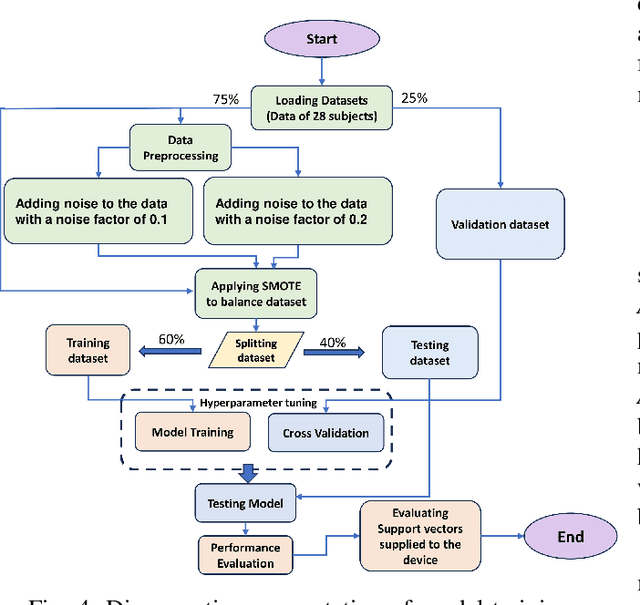Ayushi Gupta
Non-Contact Breath Rate Classification Using SVM Model and mmWave Radar Sensor Data
Jul 18, 2024



Abstract:This work presents the use of frequency modulated continuous wave (FMCW) radar technology combined with a machine learning model to differentiate between normal and abnormal breath rates. The proposed system non-contactly collects data using FMCW radar, which depends on breath rates. Various support vector machine kernels are used to classify the observed data into normal and abnormal states. Prolonged experiments show good accuracy in breath rate classification, confirming the model's efficacy. The best accuracy is 95 percent with the smallest number of support vectors in the case of the quadratic polynomial kernel.
One for All: An End-to-End Compact Solution for Hand Gesture Recognition
May 15, 2021



Abstract:The HGR is a quite challenging task as its performance is influenced by various aspects such as illumination variations, cluttered backgrounds, spontaneous capture, etc. The conventional CNN networks for HGR are following two stage pipeline to deal with the various challenges: complex signs, illumination variations, complex and cluttered backgrounds. The existing approaches needs expert expertise as well as auxiliary computation at stage 1 to remove the complexities from the input images. Therefore, in this paper, we proposes an novel end-to-end compact CNN framework: fine grained feature attentive network for hand gesture recognition (Fit-Hand) to solve the challenges as discussed above. The pipeline of the proposed architecture consists of two main units: FineFeat module and dilated convolutional (Conv) layer. The FineFeat module extracts fine grained feature maps by employing attention mechanism over multiscale receptive fields. The attention mechanism is introduced to capture effective features by enlarging the average behaviour of multi-scale responses. Moreover, dilated convolution provides global features of hand gestures through a larger receptive field. In addition, integrated layer is also utilized to combine the features of FineFeat module and dilated layer which enhances the discriminability of the network by capturing complementary context information of hand postures. The effectiveness of Fit- Hand is evaluated by using subject dependent (SD) and subject independent (SI) validation setup over seven benchmark datasets: MUGD-I, MUGD-II, MUGD-III, MUGD-IV, MUGD-V, Finger Spelling and OUHANDS, respectively. Furthermore, to investigate the deep insights of the proposed Fit-Hand framework, we performed ten ablation study.
Recurrent Neural Based Electricity Load Forecasting of G-20 Members
Oct 24, 2020



Abstract:Forecasting the actual amount of electricity with respect to the need/demand of the load is always been a challenging task for each power plants based generating stations. Due to uncertain demand of electricity at receiving end of station causes several challenges such as: reduction in performance parameters of generating and receiving end stations, minimization in revenue, increases the jeopardize for the utility to predict the future energy need for a company etc. With this issues, the precise forecasting of load at the receiving end station is very consequential parameter to establish the impeccable balance between supply and demand chain. In this paper, the load forecasting of G-20 members have been performed utilizing the Recurrent Neural Network coupled with sliding window approach for data generation. During the experimentation we have achieved Mean Absolute Test Error of 16.2193 TWh using LSTM.
Challenges in Time-Stamp Aware Anomaly Detection in Traffic Videos
Jun 11, 2019



Abstract:Time-stamp aware anomaly detection in traffic videos is an essential task for the advancement of the intelligent transportation system. Anomaly detection in videos is a challenging problem due to sparse occurrence of anomalous events, inconsistent behavior of a different type of anomalies and imbalanced available data for normal and abnormal scenarios. In this paper, we present a three-stage pipeline to learn the motion patterns in videos to detect a visual anomaly. First, the background is estimated from recent history frames to identify the motionless objects. This background image is used to localize the normal/abnormal behavior within the frame. Further, we detect an object of interest in the estimated background and categorize it into anomaly based on a time-stamp aware anomaly detection algorithm. We also discuss the challenges faced in improving performance over the unseen test data for traffic anomaly detection. Experiments are conducted over Track 3 of NVIDIA AI city challenge 2019. The results show the effectiveness of the proposed method in detecting time-stamp aware anomalies in traffic/road videos.
* IEEE Computer Vision and Pattern Recognition Workshops (CVPRW-2019)
 Add to Chrome
Add to Chrome Add to Firefox
Add to Firefox Add to Edge
Add to Edge